Great boards don’t just meet—they measure. When boards track their own performance, they shift from opinion-driven debate to data-informed decisions. Transparent metrics build trust, align strategy, and keep every member accountable to the mission. Start small, stay consistent, and let dashboards reveal where progress is thriving—and where course correction is needed. The result? A more engaged, effective board that owns its success.
Read MoreListen to the weekly podcast “Around with Randall” as he discusses, in just a few minutes, a topic surrounding non-profit philanthropy. Included each week are tactical suggestions listeners can use to immediately make their non-profit, and their job activities, more effective.
Find “Around with Randall” on Apple, Spotify, or wherever you listen to your podcasts.
Email Randall with a show topic: podcast@hallettphilanthropy.com
Email Randall with a thought regarding a specific show: reeks@hallettphilanthropy.com
Filter
- 200 1
- 2023 2
- 2024 1
- 2025 1
- 80/20 1
- 990 1
- AI 2
- AI Podcast 1
- Action 1
- Advice 1
- Advocacy 1
- Anonymity 1
- Board 2
- Boards 2
- Boss 1
- Burnout 1
- CEO 1
- Capital Campaign 2
- Case Statement 2
- Celebrating 1
- Christmas 1
- Closing 1
- Collaboration 3
- Community 1
- Contracts 1
- Data 1
- Decision-making 1
- Development director 1
- Donor Engagement 3
- Donor Experience 1
- Donor Relations 1
- Donor Relationships 4
- Donor retention 1
- ELB 1
- Employee 1
- End of year giving 1
- Engagement 4
- Ethics 2
- Evaluation 1
- Feasibility Study 1
- Feedback 1
- Financial Planning 1
- Fundraising 6
- Fundraising Strategy 1
- Giving USA 1
- Governance 1
- Great Philanthropists Series 1
- Guest Synopsis 1
- HR 1
- Healthcare 1
In today’s digital world, one false post can damage a nonprofit’s reputation faster than any press release can repair it. False information spreads up to six times faster than truth—and small organizations often lack the resources to respond effectively. The key is preparation: monitor social platforms, respond calmly and transparently, and have a crisis protocol ready before misinformation strikes. Rebuilding trust takes time, but protecting it starts with awareness, clarity, and steady leadership. Don’t wait for a storm—build your umbrella now.
Read MoreNonprofits often face a silent crisis: they can’t fund the very infrastructure that keeps their mission alive. While donors love to support visible programs, few realize that unrestricted gifts – the ones that cover salaries, compliance, and basic operations – are what make real impact possible. When organizations underfund their “overhead,” they enter a starvation cycle that weakens long-term sustainability. By reframing unrestricted giving as mission fuel, nonprofits can help donors see that trust, not just passion, drives meaningful change. Restricted gifts show commitment. Unrestricted gifts show belief in leadership.
Read MoreNonprofits can’t afford to ignore mental wellness. Stretching employees too thin leads to burnout, turnover, and lost donor trust—costs that ripple across mission, fundraising, and community impact. Leaders who invest in staff well-being not only do the right thing but also protect retention, efficiency, and donor relationships. From normalizing mental health conversations to flexible workspaces and empathetic leadership, the path is clear: taking care of your team is both a moral and strategic imperative.
Read MoreToo often, nonprofits treat donors as if they are obligated to give—out of duty, guilt, or long-standing expectation. This mindset not only diminishes donor joy but also undermines the potential for transformational gifts. True philanthropy is rooted in passion, where giving aligns with a donor’s values, identity, and sense of purpose. By shifting from obligation to passion, nonprofits can foster deeper loyalty, larger gifts, and lasting impact. At its core, philanthropy should be about self-determination and joy, not obligation and pressure.
Read MoreWhen a nonprofit’s founder or small group wields too much influence, mission drift can quietly erode trust, credibility, and board strength. The result? Confusion among donors, disengaged board members, staff turnover, and even reputational risk. The cure lies in proactive governance: clear roles, term limits, strong bylaws, intentional recruitment, and the courage (both from inside the board and, when needed, from outside voices) to keep the mission front and center.
Read More


